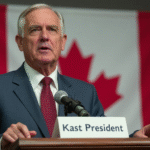Introduction and Background
A common investment advice is to “dollarize your portfolio” as a safeguard against currency depreciation. This strategy gained popularity in Mexico in 1994, but the Mexican peso has advanced over 12% against the US dollar by August of this year. Despite recent volatility, the Mexican peso has not shown a weakening trend and is currently at levels similar to late 2016.
Historical Context of the US Dollar
The history of the US dollar as a global reserve currency began in 1944 at the Bretton Woods Conference. This gathering aimed to support and stimulate post-World War II reconstruction among 44 allied nations. Key decisions included establishing the currency as a global settlement medium and reserve, and linking its value to gold at a fixed price of $35 per ounce. Countries transferred their gold reserves to the US in exchange for dollars, intended for reconstruction financing.
However, the gold convertibility ended in 1971 when President Richard Nixon suspended it.
Current Scenario and Challenges
Despite being the most accepted currency for over 50 years, the US dollar has faced scrutiny this year after a roughly 18% decline, while gold has seen a return of over 40%, its best performance since 1979. This context includes controversial trade and migration policies by the US administration, alongside accumulating geopolitical and fiscal risks, advancements in cryptocurrency regulation, rapid growth in artificial intelligence, and the Federal Reserve’s rate-cut cycle resumption.
Balancing Perspectives on Dollar Investments
Although the dollar is widely accepted and a reserve currency, it can experience depreciation and appreciation like any other asset. Transitioning from a passive to an active approach when incorporating dollars into investment portfolios—adopting a flexible and dynamic perspective in decision-making by identifying risks and opportunities in currency parity—can enhance the likelihood of achieving better returns.
Furthermore, examining currency parity by focusing on two currencies instead of just local factors can provide a broader outlook on future performance.
Key Questions and Answers
- Q: Why is the dollar considered a global reserve currency? A: The US dollar became the primary global reserve currency following the Bretton Woods Agreement in 1944, which linked it to gold and established it as a settlement medium.
- Q: What factors contribute to the dollar’s current challenges? A: The US dollar faces scrutiny due to a combination of factors, including controversial trade and migration policies, geopolitical risks, advancements in cryptocurrency regulation, growth in artificial intelligence, and the Federal Reserve’s rate-cut cycle.
- Q: How can investors better manage dollar-based portfolios? A: By adopting a flexible and dynamic approach, investors can identify risks and opportunities in currency parity, potentially enhancing their portfolio’s performance.
- Q: Why is analyzing currency parity important? A: Analyzing currency parity by focusing on two currencies instead of just local factors can offer a more comprehensive outlook on future performance.






